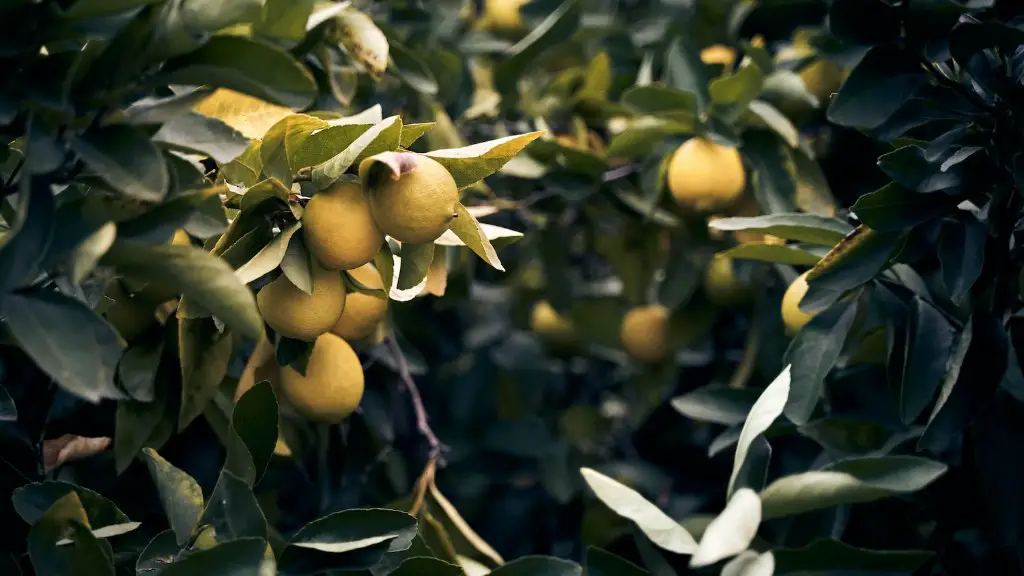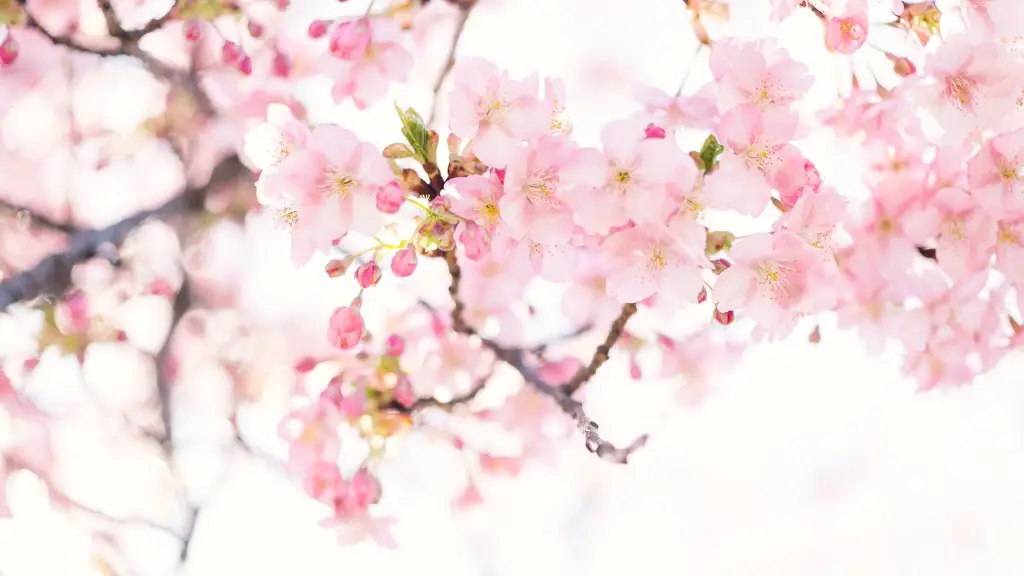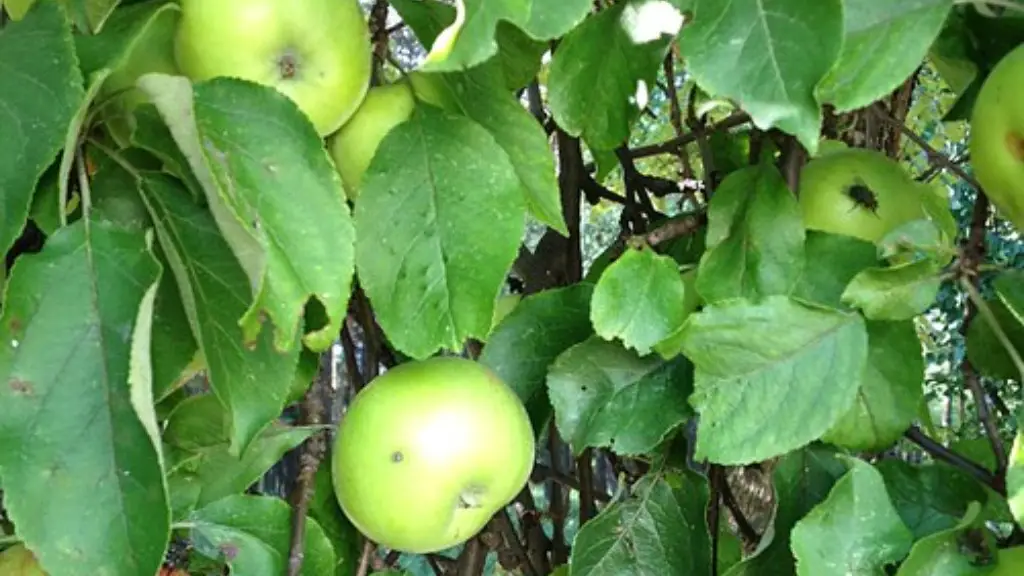Meyer lemon trees are beloved by many citrus enthusiasts, admired for their glossy leaves, abundant fruit production and captivating aroma. Unfortunately, these luscious trees can be prone to a number of diseases and disorders. Identifying and solving these problems is the key to a healthier and more fruitful Meyer lemon tree.
The first problem that may affect a Meyer lemon tree is an infestation of scale insects. These small, round insects feed on plant sap and can weaken the foliage of citrus trees. To rid a Meyer lemon tree of scale, mix one quart of horticultural oil with a few drops of liquid soap in a gallon of water, then spray the tree thoroughly.
Second, fungal infections—commonly referred to as “rust”—may also infect Meyer lemon trees. Rust causes yellow spots on the top side of leaves, while the bottom is covered in orange-colored spores. To prevent rust, keep the area around the tree free of debris, weeds, and any other plant material. Additionally, prune away any infected leaves and twigs.
Third, over-watering can be an issue for Meyer lemon trees. Too much water can cause leaf drop, poor fruit quality, and fungal root rot. To avoid overwatering, make sure the Meyer lemon tree is planted in a well-drained pot or soil and always let the top layer of soil dry before watering.
Fourth, nutrient deficiencies can also cause a Meyer lemon tree to become sickly. These deficiencies can occur when the tree isn’t getting enough nitrogen, zinc or magnesium. To help the Meyer lemon tree get the nutrients it needs, give it a fertilizer specifically designed for citrus trees, following the instructions on the package.
Finally, Meyer lemon trees can sometimes be affected by infections from a type of bacterium, known as xanthomonas citri. This can cause yellow and brown spots on the leaves of the tree, as well as fruit discoloration and rotting. To help fight off this infection, apply a copper sulphate-based spray to the tree every two to three weeks, being careful to avoid direct contact with the leaves.
Scale Insects
Scale insects, like most insect pests, can wreak havoc on a Meyer lemon tree by sucking sap from its leaves, stems, and fruits and weakening the foliage. In addition to causing foliage damage, scale insects can also transmit plant diseases. Treatment for scale infestations depends on the severity of the infestation. A mild infestation can be removed by pruning the affected areas and applying a horticultural oil and liquid soap mixture directly to the tree. If the infestation is severe, contact your local extension office for advice on chemical control and other treatment options.
Since scale insects reproduce quickly, it is important to act fast and treat the infestation as soon as it is identified. If left untreated, scale can spread to other parts of the tree and other nearby plants, resulting in further damage.
Fungal Infections
Fungal infections, like rust, are common in Meyer lemon trees, and are easily identifiable by their bright yellow and orange markings. These infections make it difficult for the Meyer lemon tree to absorb the nutrients it needs and can weaken the plant over time.
Fungal infections can be difficult to treat and can often reoccur. The best way to prevent fungal infections is to keep the area around the Meyer lemon tree free of weeds, other plants, and fallen leaves, and to regularly prune away any diseased branches and leaves. Additionally, applying a fungicide can help prevent future infections.
Over-Watering
The biggest enemy of a Meyer lemon tree is over-watering. Too much water can cause the tree to become waterlogged, leaving the roots unable to breathe and unable to absorb enough nutrients. This can result in poor quality and yield of fruit, and can even result in fungal root rot.
The key to avoiding over-watering is to make sure the Meyer lemon tree is planted in a well-draining pot or soil, and to only water it when the top layer of soil has dried out. Additionally, be sure to only water the plant early in the day, so it can dry off before nighttime.
Nutrient Deficiencies
Meyer lemon trees can sometimes suffer from nutrient deficiencies, such as nitrogen, zinc, or magnesium. Nutrient deficiencies can cause the leaves of the tree to become yellow and discolored, and can even result in stunted growing and poor fruit production.
Treating a nutrient deficiency is fairly simple and can be done by fertilizing the Meyer lemon tree with a fertilizer designed for citrus trees. Additionally, some organic matter, like compost, can help to improve the soil and provide the necessary nutrients for the tree.
Xanthomonas Citri
Xanthomonas citri is a bacterium that can infect Meyer lemon trees and cause yellow and brown spots on the leaves of the tree, as well as fruit discoloration and rotting. This infection can weaken the tree and reduce its productivity over time.
Treating a Xanthomonas citri infection is often done with copper sulphate-based sprays. However, it is important to be careful in applying these sprays as they can damage the foliage of the tree when applied in too high of a concentration. Always follow the instructions on the package and avoid contact with the leaves of the Meyer lemon tree.


